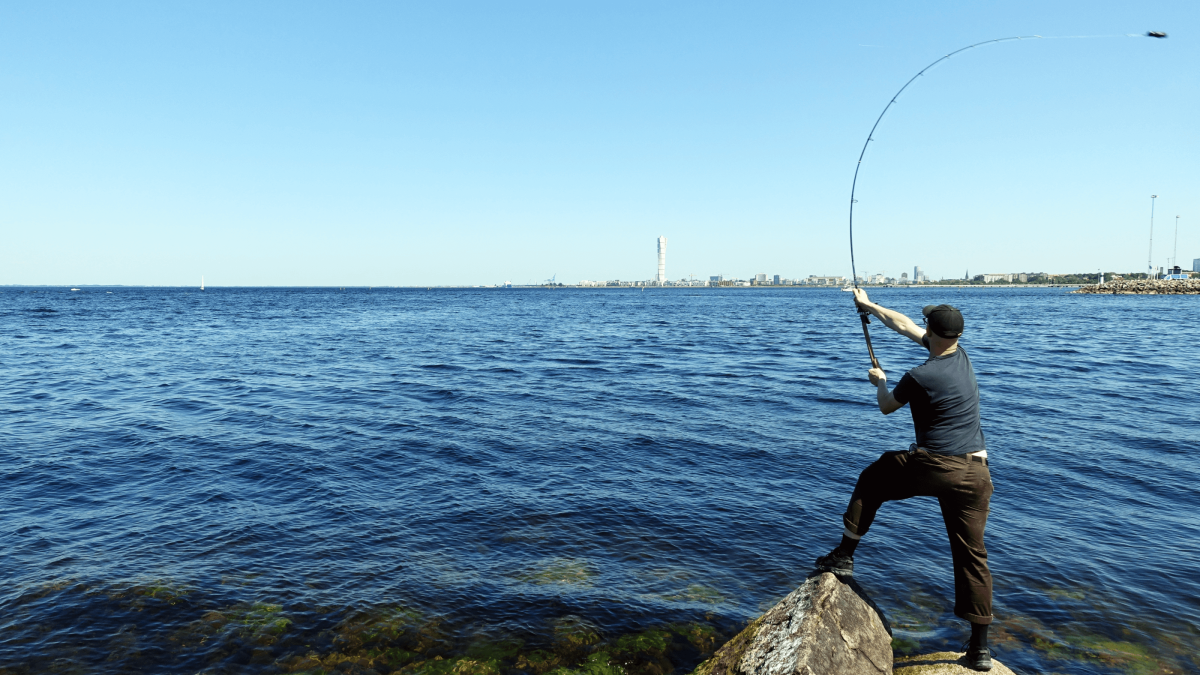Designer Erik Sandelin explores the concept of adesign as a radical act of creative restraint, challenging design traditions of forceful intervention. In this discussion, he reflects on the political and ethical dimensions of withholding action, and the transformative potential of cultivating a register of grace—the capacity to “leave be.”
Erik Sandelin was interviewed by Dora Vanette and Ivica Mitrović.
You propose a radical approach to design that centres on grace, which you define as the creative act of not doing what you are able to do. What are some ways designers can make this refusal to impose into an active gesture, instead of an act of passive withdrawal? How can the inaction of grace avoid becoming a reactionary act of resignation? Or, more specifically, how does a designer transcend the “negative realm of nondesign to the creative domain of adesign, from resignation and failure to grace.” (p. 56)
We tend to think of design in terms of making new things: designers act through addition and intervention. But in a world where human activities often violently constrict the lives of others, I argue that designers need to cultivate a register of grace, a capacity to actively not do what you are able to do. Greek historian Thucydides famously claimed that “each one commands where one has the power to do so”. In my work I have sought to articulate and activate moments where Thucidydes dictum is suspended – when it becomes possible to act expressively without exercising all force at one’s disposal. On the level of designing, I call such moves of creatively unrealised force adesign. Let me offer two examples:
In 1996, architects Lacaton & Vassal were commissioned to redesign Place Léon Aucoc, a small square in Bordeaux, France. The architects spent lots of time on-site. They talked to the local pétanque players and they noted the movements of the flaneurs. Then they presented their proposal: do nothing. The square is already beautiful, they claimed, already full of quality, charm and life. Nothing but a few minor changes, such as cleaning the square more often and replacing the gravel, was needed. This led to a conflict with their client, the City of Bordeaux. Lacaton recounts: “At first they said, ‘ok, we’ll find someone else if you don’t want to do it.’ Our response was, ‘We do want to do the project, and our project is to do nothing.’ After three months of discussion, they were convinced that we had done a good project. They said ‘okay, you’re right’.”
Twenty years later, fashion design student Laura Krarup Frandsen refused to produce a collection of garments for her masters project at the Royal College of Art. At the degree show she instead staged a “die-in” performance where climate activists lay on the floor like corpses. Spurred into climate activism by a recent UN report which described the huge emissions from the garment industry, Frandsen had come to the conclusion that producing any garments at all (even through sustainable methods) would be inappropriate. When the project was presented on a popular design blog, Frandsen was called out as a “lazy student”, who “didn’t do her homework” and “avoided her finals” using “little effort”. Others focused on the work having “no substance”, claiming “she hasn’t actually done anything yet”.
The critique levelled at Frandsen did not take aim at the quality of her work. It questioned whether her work qualified as design at all.
I claim that these are not aborted or incomplete design processes. On the Lacaton & Vassal website the Place Léon Aucoc project is assigned the status of “built/realisé”. The creative outcome is not void. It is do nothing, an adesign act of leaving be, of leaving room for the life that already exists at the site. The designers’ decision is not inaction motivated by refusal, inability, complacency or apathy. It is a carefully considered and articulated design proposal.
Adesign moves can cause trouble. The designers risk becoming, what I (drawing on Sarah Ahmed) call “designer killjoys”, by not adhering to conventional virtues of design, where designing is coupled with adding, proposing with imposing, and action with force.The concept of adesign attempts to decouple action from force, and grace from resignation, in design.
How can designers move beyond approaching care as an intimate bodily encounter and towards caring for the unknown?
In Design and Grace I tend to the friction between grace and four key notions of contemporary more-than-human design: entanglement, touch, hybridity and care. Feminist ethics of care pose a vital alternative to universal rule-based ethics. Caring entails an ongoing work of becoming engrossed in the situation of the other. Yet, as Eva Haifa Giraud has pointed out, uncritically celebrating moves towards the other, care may end up lubricating exploitation. A too narrow focus on immediate somatic relations risks masking the histories, contexts and exclusions that lie behind seemingly caring encounters.
For example, bringing other animals into human physical or discursive systems is often a kiss of death for the animal. Abattoir designer Temple Grandin empathises with cows to design a curved cattle chute that makes the animals’ last moments in life less stressful. Yet, her design also makes the process of killing more efficient. Grandin may be designing the thing right but is she designing the right thing?

I explore the tension between grace (moving aside) and care (moving towards) through a design experiment, Odysseus in the Supermarket. Just as Odysseus had himself tied to the mast to resist the fair-voiced and deadly Sirens, Odysseus in the Supermarket prototypes self-exclusion services that allow people to block themselves from buying animal products, petrol and air travel. These contemporary Odysseus pacts suggest operating on the level of the situation, rather than standing virtuous in the situation, as a valid response to the call to care for unknowable others. The grace of Odysseus is one of careful, cunning and cautious bindings. Such an ethics requires designers to, for example, be able to cunningly question a client brief to avoid impossible situations.
To love, writes Simone Weil, is to consent to distance. Grace points towards the need for designers to be able to oscillate between standing with the other in solidarity and carefully leaving the other be.
What does a consideration of vegan design contribute to design practice in general? How can it affect social relations within existing systems of domination?
In Design and Grace, I put veganism to work in two ways, as evoked by this anecdote from my research on human-animal relations in design:
I interviewed a vegan design student, “Karin”, who was taking a class on “speculative and careful more-than-human entanglements with companion species” at a Scandinavian design school. Karin was looking forward to pursuing her animal advocacy as part of her design education. However, she was surprised that the “more-than-human” theme of the class was about acknowledging rather than liberating other animals. She noted that none of her classmates worked with “production animals”, the animals that we eat or wear. They were, rather, devising ways of empathising with microbes or the wind. Karin’s sense of disconnect from her peers was exacerbated by troubling suggestions from her supervisors that she should try some meat so as not to be too opinionated in one direction.
First, I use the term “vegan design” to highlight important distinctions within the field of human animal relations in design – between an entanglement-oriented “more-than-human” design and an emancipatory vegan design, influenced by Critical Animal Studies (CAS), that works directly towards ending the exploitation of other animals.
Second, the tension of emancipation and entanglement highlighted by veganism is one instance of the tension between grace and the virtues of addition and imposition to which contemporary design remains, explicitly or implicitly, wedded. Karin’s supervisor was likely concerned that their student was sacrificing (positive) designerly virtues of curiosity and exploration on the altar of (negative) ethical commitment. Karin’s firm “no” to human consumption of animals was cast as incompatible with the inquisitive “yes” of the good designer.
Through the notion of grace, Karin’s vegan “no” can be understood as begetting new, supple relations rather than curtailing designerly curiosity; the “no” becomes an entry point to a fecund complexity rather than a naive distancing.
You consider your prototypes in Design and Grace as examples of “speculative interventions.” How does your work fit into and cut across speculative design as a practice?
I strive to make “operative prototypes” for activating and investigating gracious modes of life. Operative prototypes are affective and topological. They are affective, in a Spinozan sense, because they operate on human capacities to affect and to be affected. If grace is a curious capacity to not do what you are able to do, my prototypes fuel design experiments that activate (a)human creative capacities of leaving be. They are topological in that they fold together different times and places. They are “flames frozen by different time-scales”, flickering between variable speeds. Different points in time percolate in and through the operative prototype. Operative prototypes ask the speculative question What if? while claiming reality through activating a new It is!

For example, Fishwatching is a recreational fishing setup where you capture fish on camera instead of on a hook. Through a fictional news article prototype that recounts how the Swedish Angling Association has rebranded itself as the Swedish Fishwatching Association, Fishwatching speculates on a world where catching and killing fish is unacceptable; What if? Using a reconfigured angling setup with an underwater camera and a de-hooked metal lure, I can go fishwatching with my son today; It is!
A “speculative intervention”, according to Carl DiSalvo, is an ongoing oscillation “between reaching towards understanding and gesturing towards action”. The distinction between speculating on potential futures and realising alternative presents starts to blur in the speculative intervention. Yet, operative prototypes strive for more than “gesturing” towards action. A Malmö Fishwatching excursion has real affective outcomes for the implicated humans and fish. Operative prototypes are not positioned in linear time, with speculative scenarios are situated in “the future” to instigate discussions in “the present”. Past and present, life and representation, activism and investigation bleed into each other in and through the operative prototype.
What is the potential of your approach as an educational method, tool or technique in the present and future design curriculums?
Grace is not a method but a register or, what Michel Serres would call, an intuition. In Design and Grace I have started populating a palette of nos and nots with concepts, exemplars and anecdotes that can be put to work in educational settings towards cultivating such a register. I am always delighted when students approach me to let me know that my work has given them confidence and tools to pursue and argue for a project that they worried would not pass as valid design work. Ultimately, Design and Grace is an attempt to refigure the designer, not as colonising conqueror or connective empath but as a (dirty) dancer that – cautiously, curiously, carefully – practices the dispossession of the world.